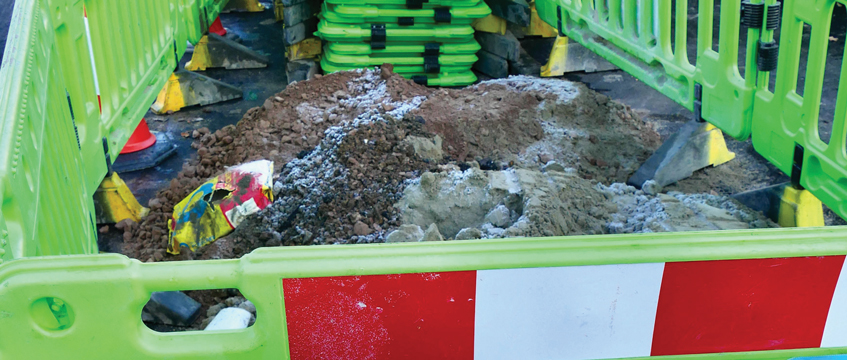The Product Security and Telecommunications Infrastructure Act 2022 makes significant changes to the Electronic Communications Code, as well as the Landlord and Tenant Act 1954. Some of these changes came into force on 7 February 2023, with others following on 17 April. Others are still are subject to enactment by regulations yet to be made.
What hasn’t changed?
There has been longstanding confusion over who the “occupier” is under the Code. It had been anticipated that the 2022 Act would clarify this, however, it does not do so on the basis that this was dealt with in last year’s Supreme Court judgment in Cornerstone Telecommunications Infrastructure Ltd v Compton Beauchamp Estates Ltd and conjoined appeals [2022] UKSC 18; [2022] EGLR 28.
In that case, the Supreme Court said that, broadly, “occupation” means physical presence on and control of the land. However, where an operator in occupation seeks code rights, their occupation is disregarded. This is important because a claim for code rights has to be made against the occupier and so, previously, an operator who was itself the occupier was not entitled to make a claim. The extent of this disregard has not yet been tested in the courts, so this may lead to continued litigation.
Upgrading and sharing apparatus
From 7 February 2023, the right to upgrade and share apparatus is now an express code right. Previously, the Code allowed operators to upgrade and share apparatus as long as they did not adversely impact the landowner, giving rise to disputes between landowners and operators.
The 2022 Act gives operators a new code right to share, unrestricted by the impact on landowners.
It also imposes those changes for subsisting agreements and for apparatus installed before December 2003 (under the old licensing regime, prior to the Communications Act 2003 coming into force) to harmonise them with the Code, which will come into force on 17 April.
Flying lines
Operators already had the right under the Code to “fly lines” (ie install and keep telephone lines) over adjacent land to access their apparatus. The 2022 Act extends that right to allow operators from 7 February 2023 to give other operators the right to do so.
This appears to be a broad right, the only limit being the requirement for the other operator to get the main operator’s consent but, unusually, not that of the adjoining landowner.
The 1954 Act
The 2022 Act makes further changes but there is currently no indication of when these will come into force.
Before these changes, rent was calculated differently under the Code and under the 1954 Act; code agreements disregarded the suitability of the site for electronic communications (the “no network assumption”), whereas 1954 Act renewals applied a higher market rent valuation.
The 2022 Act inserts an additional provision into the 1954 Act which aligns it with the Code. Both will now be valued on the “no network” assumption.
There are suggestions that the government may later give the First-tier Tribunal or the Upper Tribunal jurisdiction to hear both cases under the Code and 1954 Act renewals, which would help ensure uniformity in valuation approaches.
National security
The 2022 Act introduces a new power for the secretary of state to issue a certificate confirming that an application of code rights would prejudice the country’s national security. Once issued, the court must make an order of refusal.
Unresponsive landowners
The 2022 Act adds a new procedure allowing the court to impose a code agreement on landowners who are unresponsive or cannot be identified (particularly in remote or rural areas).
In order to access this new procedure, operators must show they intend to provide services to the premises, though it is not yet clear how (and when) that intention must be demonstrated.
The requirement for operators to provide services to the premises means the process could apply where an operator intends to install a fibre optic connection to the land, but not a mast – which would be for the purpose of providing a connection elsewhere.
There is then an extensive notice procedure, requiring the operator to serve two warning notices on the landowner followed by a final notice. If the landowner fails either to “agree or refuse” the request or “otherwise acknowledge” the final notice within 28 days, the operator can apply to court for an order imposing a code agreement.
This suggests landowners could prevent operators from seeking orders just by acknowledging their notices. It is not clear whether this will provide a helpful route for operators, or impose a cumbersome process subject to a built-in loophole.
Alternative dispute resolution
The 2022 Act introduces an obligation on operators and landowners to consider using ADR before issuing applications, with costs sanctions for failure to do so.
It remains to be seen whether this will result in meaningful change in how parties approach code disputes, or amounts to a tick box exercise.
What do these changes mean?
The 2022 Act seems like a bit of a mixed bag. Some of the changes – particularly the alignment of the Code with the 1954 Act, and enshrining the right to upgrade and share apparatus – will provide much needed clarity to the Code and will be welcomed by operators, if not by landowners.
However, the lack of a codified definition of the “occupier” looks like an omission likely to lead to further disputes.
It also remains to be seen whether the new provisions on unresponsive landowners and ADR will lead to real change, or simply add more red tape.
Megan Stewart is an associate and Lucy Redman is a senior knowledge lawyer at Hogan Lovells International LLP








